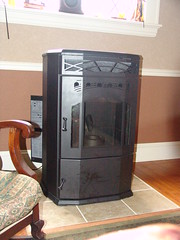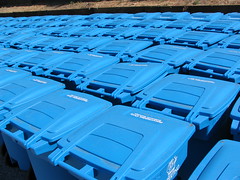
So you're a meat-eater. Most of us are (sorry all you vegetarians out there - this article is geared toward us carnivores, but you herbivores may benefit from it a bit, as well...just read). Do you know where your meat is coming from? Do you know how it got from the farm to your plate? Do you even know what's in it?
These are all questions that most shoppers don't tend to ask when they go to the grocery store for meat, and certainly don't think about as they're eating it. Here's the shocking truth about where the current meat you're eating likely comes from and some advice on how to make a healthy, humane, permanent change.
Your Typical Meat
Whether you're buying chicken, beef or pork, you're going to want to know the truth about where most of that grocery store meat comes from. On many farms that are in business for the sole purpose of breeding animals for slaughter, the animals are kept in cages that are jam packed together and very overly crowded. The animals have little to no room to move about and are subjected to a life of confinement. This tactic is known as factory farming.
The animals in factory farms live their lives under the most miserable conditions until they are finally sent off to slaughter. Farmers use a number of tactics to further confine their factory animals.
Debeaking is a process used on birds that removes their beaks without anesthesia, a very painful procedure for a bird to endure. Many birds stop eating from the pain after debeaking and die of starvation.
Tail docking is a tactic used on pigs that clips their tails short so they don't nip at each others tails. Again, the procedure is performed without anesthesia and is very painful to the pig.
Battery cages are used for egg-laying hens and are extremely tight quarters for a number of hens so they can't ever spread their wings. With limited human contact, birds that fall out of cages or get stuck in between stacked cages often die from lack of food and water.
A female pig that is raised for breeding will often be kept in a
gestation crate that is so small that she spends her entire life without ever having the room to stretch out her limbs or even stand up. She gives birth to many litters from the gestation crate before being sent to slaughter.
Other crates are used for baby cows. Male babies that are born for the purpose of becoming dairy cows, after they are born, are often subjected to a
veal crate, where they are fed synthetic formulas and never allowed to be around their mother or drink their mother's milk.
When the animals on factory farms are finally put out of their misery and slaughtered, it is done so in a careless and painful way. This is just scratching the surface of the inhumane practices used by factory farmers, and the meat that they produce is the most commonly found meat on the market in grocery stores. On top of all of these practices, animals are usually pumped up with hormones to make their meat bigger and thicker and given antibiotics to fight the naturally living diseases that filter through their packed quarters.
This is the meat that you consume on a daily basis. Not only are these inhumane practices, but they're bad for the environment and they're bad for your health. Vow to make a change now, and switch to eating less, more healthy meat in the future. Here's how.
Humane Meat
While the term "humane meat" is considered an oxymoron to some, there really exist practices for slaughter that are more humane in terms of how the animals are treated and how they are slaughtered. And with the public becoming more aware of factory farms (hopefully you are now, too, after reading the first half of this article), humane meat is growing in popularity.
Here's what to look for if you want to buy humane meat, which is healthier for you and better for the environment:
- Free Range: The term free range can actually apply to both meat and dairy products, and it means that the animals are allowed to roam freely on the farm instead of being contained. Free range products often get confused with pasture products, but free range means no fences at all, whereas pastures involve the use of fences but still give animals plenty of space to roam around. While free range farming isn't used for cattle quite as much anymore, it's a very popular method for raising poultry.
- Grass Fed: This term speaks for itself. Instead of being fed synthetic products and hormone-enriched foods, animals are allowed to eat their natural diets of grass. It generally refers to beef products, but it means the cow itself eats a natural diet and therefore there are no additional ingredients in the meat you purchase at the store or butcher. The USDA defines that a grass fed diet must consist of at least 95% natural grass.
- Certified Organic: This meat falls under a strictly regulated category by the USDA and is arguably the healthiest option. First, a farmer must keep track of the animal's breed, family history, veterinary care and feed and the animal must be raised on a certified organic pasture. The animals must have unrestricted outdoor access, they never receive antibiotics or hormones and they are fed only a diet of certified organic grasses and grains.
- Certified Humane: The certified humane label insures that any meat, egg or dairy product stamped with the label has come from animals that were treated humanely. It insures that the animals had access to natural food and water, their health was in no way endangered by their environment and they had sufficient room to move around naturally and freely.
If you're totally against the practices of factory farms, you could even stand your ground by eating less meat in general. Switching to more humane meat is obviously the easiest option, but it wouldn't kill people to skip meat for a day each week.
These more humane types of meat, though, can often be difficult to find in the grocery store. If you can't find it, ask your grocer. The more people that ask for it, the more it will become available.
Also consider buying local meat at a farmer's market or local butcher shop. The chances are very high that local farmers treat their animals humanely, and by purchasing meat locally, you're supporting your local market and agriculture and it will give you a chance to speak directly to the butcher or farmer that your meat is coming from. Ask as many questions as you feel you need answered - it's their job to know about their meat, and you'll only benefit from asking.
Humane Slaughter
On top of being raised properly, humane meat is also slaughtered differently than it is on a factory farm. While factory farm animals are often slaughtered in painful manners that cause the animal suffering, humane practices are those that care more about the animal welfare and understand the scientific fact that animals can feel fear and pain.
Humane slaughtering practices require the animal to be deemed unconscious before the actual slaughtering. This is usually done with either one quick gunshot, an electrical shock or with carbon dioxide. The unconsciousness comes on so quickly that the animal never feels it. Once the animal is deemed unconscious (blood is no longer flowing to the brain), it is then sent for slaughter, so it can't feel a thing.
So the next time you're in the grocery store to buy meat, first reconsider where you're buying from and head to a local butcher or farmer's market or talk to your grocer, or carefully check the labels on the packaging. Look for the terms discussed above to know that your meat was raised humanely, slaughtered humanely, and contains no hormones or antibiotics that you will then be consuming. It's the morally correct choice in meat and your health will benefit in the long run.









 To have a clean country is to have a green country. More and more countries are adopting a clean initiative and in turn a more environmental stance. In this article we look at the top 10 cleanest countries in the world, this was measured through the use of their environment performance index and a poll has been tallied. Some of the contenders are a prerequisite and there are also some surprising appearances. To adopt a cleaner country as a whole will create an environmentally friendly one and one that is sustainable.
To have a clean country is to have a green country. More and more countries are adopting a clean initiative and in turn a more environmental stance. In this article we look at the top 10 cleanest countries in the world, this was measured through the use of their environment performance index and a poll has been tallied. Some of the contenders are a prerequisite and there are also some surprising appearances. To adopt a cleaner country as a whole will create an environmentally friendly one and one that is sustainable.